|
|
|
Why an earthship, you wonder? It all
started in an ecology class in which Bridgette was learning about niches.
A poignant paragraph gnawed at a naive yet earnest desire to find her
niche.
"For a species to maintain its population, its individuals must
survive and reproduce. Certain combinations of environmental conditions
are necessary for individuals of each species to tolerate the physical
environment, obtain energy and nutrients, and avoid predators. The total
requirements of a species for all resources and physical conditions
determine where it can live and how abundant it can be at any one place
within its range. These requirements are termed abstractly the ecological
niche."
Michael J. Pidwirny, Ph.D., Department of Geography, Okanagan University
College"
Bridgette's intense desire to live as holistically and
earth-friendly a lifestyle as possible while fulfilling financial and
societal obligations forced her to reevaluate the suburban culture she had
always known. Throughout college, the luxury of summer and winter breaks
to pursue her dreams of working with medicinal plants, living close to
nature on a houseboat on the Chesapeake and meeting like-minded
individuals at conferences, seminars and hostels, created an obsession of
finding a niche she could be happy with, to the forefront of her mind her
last year of college. She started with the basics; food, water and
shelter. Perusing the internet, she landed at http://www.earthship.org,
Solar Survival Architecture's website, which she later realized yielded an
answer to each of her pursuits.
The earthship is a structure which utilizes the concepts of thermal mass
(a very dense material which can hold heat or the lack of it for long
periods of time), passive solar gain (which is the acquiring of heat from
the sun without using any outside inputs) and heat ventilation (the
process of eliminating heated air from an environment using skylights).
The thermal mass is derived from automobile tires laid on their sides, not
on the tread, pounded with approximately 300 lbs of dirt, accomplishing a
3 foot thick wall, 10-12 feet high with large amounts of thermal mass. The
tires are stacked like bricks, prior to being pounded, and formed into a
large single U-shaped structure or several smaller connected U's. The
exposed side, or upper side of the U, faces south in the northern
hemisphere and vice versa in the southern. It becomes a wall of vertical
glass thus achieving passive solar gain. Operable windows and angles can
be incorporated within this 'greenhouse' structure.
Within each room or U, an operable skylight is installed to aid in heat
release. Shades are also used to block out unwanted sun and insulate from
heat loss at light. The roof is also well insulated with a typical
R-factor of 60; three times the industry standard. The tires are insulated
on the outside of the U and earth is either piled up around the outside of
the U extending at least 8 feet around, creating a berm. In drier
climates, the bottom half of the U is an excavated earth cliff and the top
half is the tire U bermed with soil as described above.
The tires on the interior are sealed via adobe plaster to prevent off-
gassing due to oxygen and sunlight. The water to the earthship can be
harvested from the propanel roof and stored in a cistern for
pressurization and filtration. All water except toilet water is then fed
to plants grown within permanent rubber-lined planters along the glass
face of the house. The end result is odorless and clear water pumped to
the toilet. It is then drained to a solar-assisted septic tank with
outdoor planter similar to the indoor ones. These evaporate and digest the
sewage. Some earthshippers grow copious amounts of food in the planters,
as all the conditions, light, warmth, water and nutrients are plentiful.
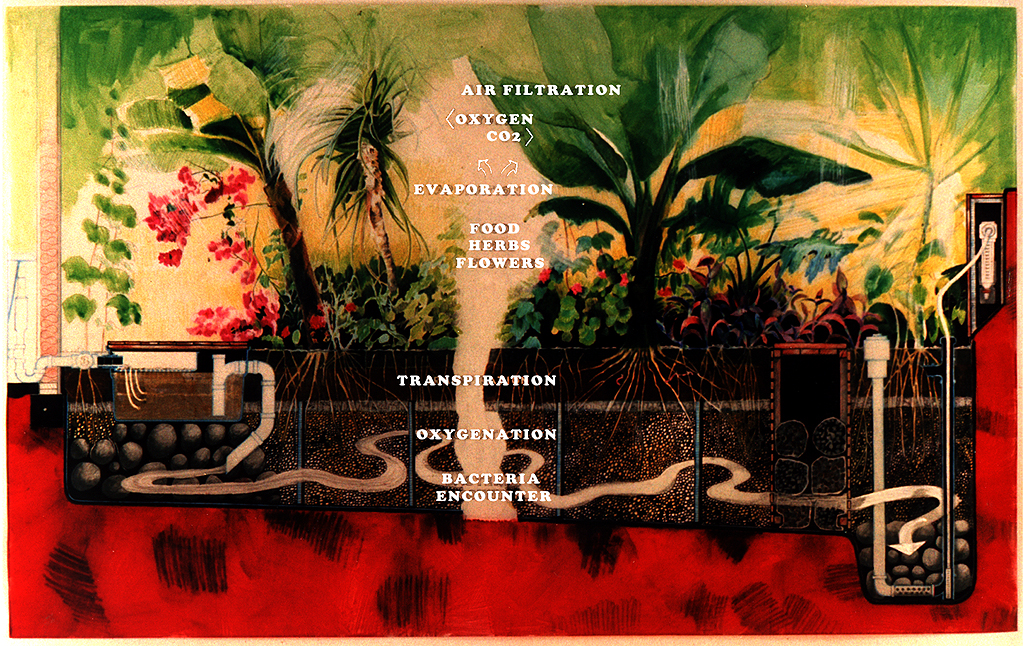
There are many more details and nice pictures at Solar Survival's website:
http://www.earthship.org. Enjoy
your findings and maybe one day we'll be fellow earthshippers ;-).

Copyright 2003
|
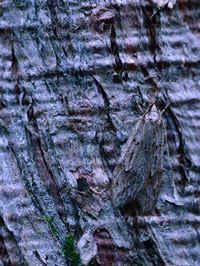
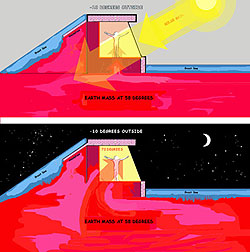
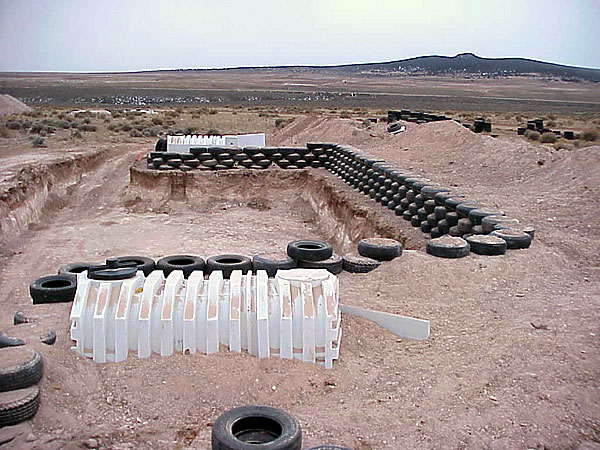
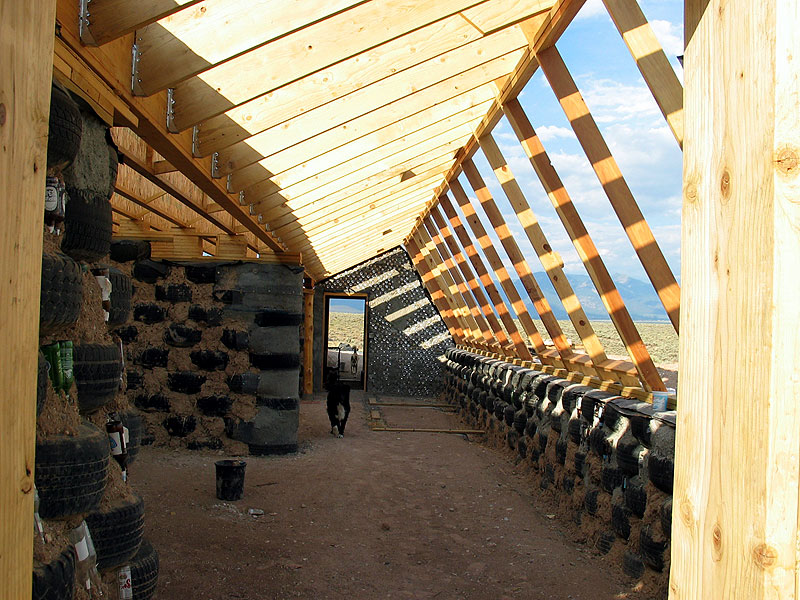
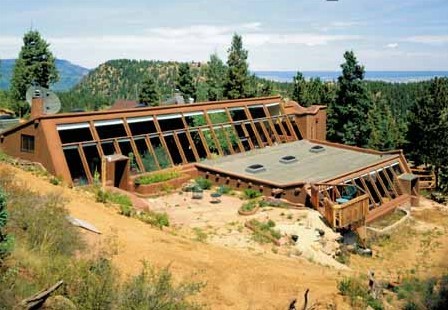
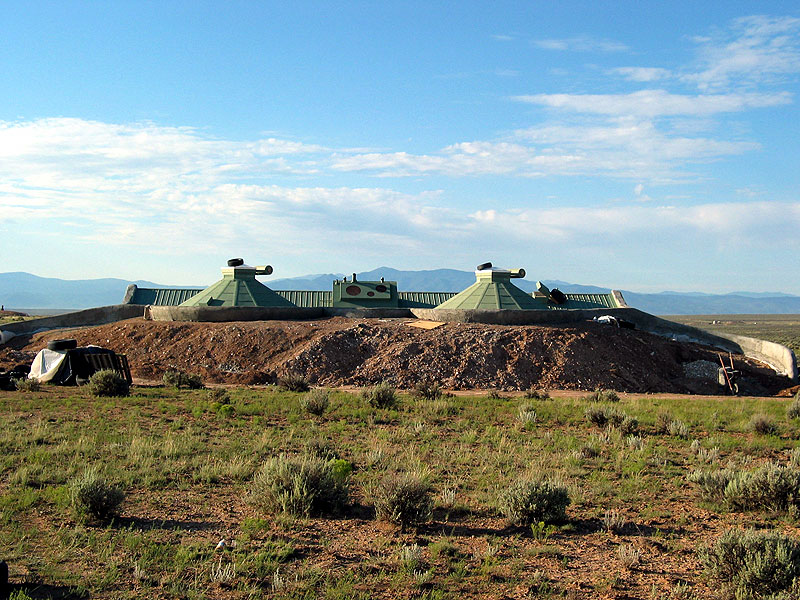
|

